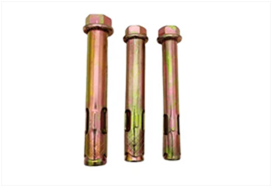10 月 . 21, 2024 05:21 Back to list
Oil Seal Production Techniques and Best Practices for Efficient Manufacturing Processes
The Manufacturing Process of Oil Seals A Comprehensive Overview
Oil seals, also known as rotary seals or shaft seals, play a crucial role in various mechanical systems by preventing oil leakage and keeping contaminants out of machinery. These components are essential in engines, gearboxes, and hydraulic systems, where they ensure optimal performance and longevity. The manufacturing process of oil seals involves several key steps, from raw material selection to the final quality checks. In this article, we will delve into the intricacies of oil seal manufacturing, exploring the materials used, the production techniques, and the importance of quality control.
1. Raw Material Selection
The manufacturing of oil seals begins with the selection of high-quality raw materials. Typically, oil seals are made from elastomers, which are polymers that have both elastic and plastic properties. Common materials used include Nitrile Butadiene Rubber (NBR), Fluoroelastomer (FKM), and Silicone Rubber (VMQ). NBR is widely used due to its excellent oil resistance and durability, making it highly suitable for automotive and industrial applications. FKM offers superior resistance to high temperatures and aggressive chemicals, while VMQ is favored for its flexibility and performance in extreme temperatures.
2. Compounding
Once the raw materials are selected, they undergo a compounding process. This step involves mixing the base polymer with various additives, such as plasticizers, fillers, curing agents, and antioxidants. The choice of additives is essential as they enhance the material's properties, such as flexibility, thermal stability, and resistance to wear and tear. The compounded material is then processed into sheets or pellets, which are ready for molding.
The next step in the manufacturing process is molding, where the compounded rubber is shaped into the desired form of the oil seal. There are several molding techniques, including compression molding, transfer molding, and injection molding.
- Compression Molding This technique involves placing a pre-measured amount of rubber into a heated mold. The mold is then closed, and heat and pressure are applied to shape the rubber into the final product. This method is cost-effective for producing small to medium volumes.
- Transfer Molding Similar to compression molding, transfer molding uses a heated chamber to transfer semi-liquid rubber into the mold cavity. This method allows for better control of the material flow and is used for more complex designs.
oil seal manufacturing

- Injection Molding In this process, rubber is heated until it becomes liquid and is then injected into a mold under high pressure. Injection molding is suitable for high-volume production as it provides precision and consistent quality.
4. Curing
After the molding process, the oil seals need to be cured, a crucial step that chemically cross-links the polymer chains, enhancing their strength and resilience. Curing is typically achieved through a process called vulcanization, which involves heating the molded seals in the presence of sulfur or other curing agents. This process solidifies the shape and improves the performance characteristics of the rubber.
5. Quality Control
Quality control is an integral part of the oil seal manufacturing process. Manufacturers must ensure that the oil seals meet specific industry standards and customer requirements. Each batch of seals undergoes rigorous testing, including pressure tests, temperature resistance tests, and dimensional checks. Advanced techniques such as computer-aided design (CAD) and finite element analysis (FEA) are employed to optimize the design and predict the performance of the seals under various conditions.
6. Packaging and Distribution
Finally, once the oil seals pass all quality checks, they are packaged for distribution. Proper packaging is essential to prevent damage during transportation and ensure the seals remain contamination-free until they reach the end-users.
Conclusion
The manufacturing of oil seals is a complex process that requires careful attention to material selection, molding techniques, curing processes, and quality control. As industries continue to evolve, the demand for reliable and efficient oil seals will only grow. By adhering to high manufacturing standards and utilizing advanced technologies, manufacturers can produce oil seals that not only meet but exceed the expectation of their customers, thus contributing to the overall efficiency and sustainability of mechanical systems across various applications.